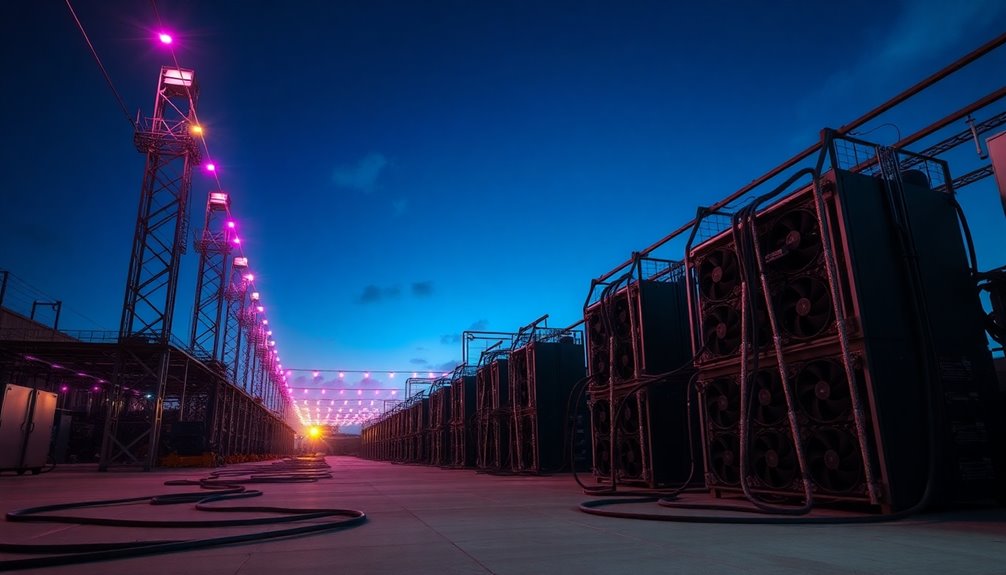Fill or Kill (FOK) orders are a specific type of trading order that requires immediate execution at your desired price. If the entire order isn't filled right away, it's automatically canceled, so you won't experience partial fills. This feature makes FOK orders particularly useful in volatile markets where quick decisions matter. They allow you to minimize uncertainty and slippage, making them ideal for day traders. However, if the market's not liquid, you might miss out on opportunities. To truly make the most of FOK orders, you might want to consider their advantages and best practices.
Key Takeaways
- Fill or Kill (FOK) orders require immediate execution at a specified price, canceling if not fully filled instantly.
- FOK orders prevent partial fills, minimizing market disruption during volatile trading conditions.
- They are ideal for day traders seeking quick execution and enhanced strategic planning.
- FOK orders differ from Immediate or Cancel (IOC) and All or None (AON) orders in execution urgency and partial fill policies.
- Carefully monitor market conditions and liquidity to optimize the execution of FOK orders and avoid cancellations.
Order Execution Methods

When you place a trade, understanding order execution methods is crucial for achieving the best results. Your orders are routed through liquidity providers like market makers, electronic communication networks (ECNs), and alternate trading systems (ATS). Market makers maintain large asset inventories to ensure immediate liquidity, while ECNs electronically match buy and sell orders at optimal prices. By leveraging these systems, brokers can find the best execution routes for you. Additionally, control over order flow can help mitigate risks associated with poor execution quality. They may also execute trades from their own inventory when they've sufficient assets available. This method is efficient but less common in highly liquid markets.
Understanding Fill or Kill

Fill or Kill orders are a powerful tool in trading, ensuring that your entire order is executed immediately at a specified price or better.
These orders come with an all-or-none requirement, meaning partial fills aren't allowed. If the order can't be completely filled right away, it's automatically canceled.
This type of order is particularly useful for trading large quantities, as it helps minimize market disruption and reduces the risks associated with partial positions. You maintain control over your desired entry or exit prices, providing certainty of execution. FOK orders typically last only a few seconds to ensure timely execution for large transactions.
However, be aware that Fill or Kill orders may not be suitable in illiquid markets, where finding the necessary volume can be challenging, leading to missed opportunities.
Immediate Order Execution Requirement

To ensure a seamless trading experience, Fill or Kill orders require immediate and complete execution. When you place such an order, it specifies the security, quantity, and price, with a strict 'Fill or Kill' designation. This means no partial fills are allowed—if your entire order can't be filled instantly, it gets canceled.
The process hinges on market liquidity; if there's insufficient liquidity to fulfill your order right away, it's canceled without delay. Your broker searches for a matching order, executing it if found. If not, cancellation happens within seconds, ensuring you don't end up with an unfilled order lingering in the system. This unique requirement combines urgency with precision, offering a distinct trading experience. Additionally, the execution of Fill or Kill orders is influenced by trading parameters, which define how orders are processed in various market conditions.
Pros and Cons Summary

While Fill or Kill orders offer distinct advantages, they also come with notable downsides. On the plus side, these orders ensure you avoid partial fills, maintain price control, and execute trades efficiently in fast-moving markets. You'll appreciate reduced slippage and minimized market impact, allowing for better overall trading outcomes. Additionally, their all-or-nothing approach significantly reduces the risk of unfavorable price movements from partial fills.
However, you might face challenges in illiquid markets where finding enough shares can be tough. There's also the risk of missing opportunities if the market shifts quickly and your order isn't executed in time. Plus, you'll need to keep a close eye on market conditions to avoid unwanted cancellations, which can add stress to your trading strategy. Balancing these pros and cons is essential for effective trading.
Fill or Kill vs. Other Orders

When choosing between Fill or Kill (FOK) orders and other types, it's essential to understand how each functions in the trading landscape. FOK orders demand immediate, full execution or they get canceled, making them ideal for large trades. In contrast, Immediate or Cancel (IOC) orders allow partial fills, letting you execute whatever's available right away. All or None (AON) orders require the entire order to be filled without the urgency of immediate execution, so they stay open longer. Good Till Canceled (GTC) orders remain active until filled or canceled, lacking any immediate execution requirement. Each order type serves different trading strategies, so pick the one that aligns with your goals and urgency in the market. Market orders guarantee execution but not price, providing a different approach to order fulfillment.
Order Execution Volatility

Order execution volatility significantly impacts trading strategies, especially in fast-moving markets.
You'll find that Fill or Kill (FOK) orders are particularly useful here, locking in prices quickly to avoid exposure to sudden price swings. By ensuring full execution or nothing at all, FOK orders help you dodge the risk of partial fills during volatile conditions.
However, in low-liquidity markets, these orders can face challenges, often leading to cancellations when immediate fills aren't possible. Understanding standard volatility allows traders to better gauge market conditions and make more informed decisions when using FOK orders.
The precision of FOK orders allows you to seize temporary opportunities without delays, making them invaluable for effective risk management.
Ultimately, navigating volatility with FOK orders can enhance your trading effectiveness, but awareness of market conditions is essential for success.
Market Impact of High-Frequency Trading

High-frequency trading (HFT) significantly influences market dynamics, reshaping how liquidity, price discovery, and volatility interact. It boosts overall market liquidity, especially for smaller cap stocks, but often at a cost to non-HFT traders. While HFT firms capitalize on profitable opportunities, they widen bid-ask spreads, increasing expenses for limit order submitters. In terms of price discovery, stocks incorporate new information faster, yet this can lead to overreactions, causing price deviations from their true value. Furthermore, HFT's increased volatility is linked to heightened risks during market fluctuations, making it crucial for regulators to monitor these practices closely. Additionally, HFT is linked to increased short-term volatility, making markets riskier for traditional investors. The rapid pace of trading can exacerbate these swings, prompting calls for regulatory measures to balance the benefits and drawbacks of HFT in the market.
Execution Timing Considerations

To effectively navigate the complexities of trading, understanding execution timing considerations is crucial.
Fill or Kill (FOK) orders require immediate execution and must be filled entirely; otherwise, they're canceled. This order type is executed within seconds, making it essential for traders needing precise timing. FOK combines the "all or none" and "immediate or cancel" designations, ensuring your order is either fully filled or promptly killed.
When trading, focus on highly liquid securities to prevent market disruption, as insufficient liquidity can lead to cancellations. Using FOK orders is particularly advantageous during volatile market conditions, where rapid price changes necessitate quick execution.
FOK orders are particularly beneficial for day trading, allowing you to avoid the uncertainty of partial fills and ensuring clarity in your strategies. Use them wisely to achieve swift and complete execution.
Frequently Asked Questions
What Types of Securities Can Use Fill or Kill Orders?
You can use fill or kill orders primarily for equities, especially when trading large quantities of stocks.
These orders work best in liquid markets, allowing for immediate execution without partial fills. This is crucial for active trading strategies, as you want to avoid disruptions and unintended positions.
How Does Fill or Kill Impact Trading Fees?
Using Fill or Kill (FOK) orders can significantly impact your trading fees. By ensuring your entire order is filled at once or not at all, you avoid the multiple execution fees that come with partial fills.
This is especially beneficial for large orders, as it helps you manage costs effectively. However, keep in mind that the immediate nature of FOK orders might reduce the chances of execution, which could affect your overall strategy.
Can Retail Investors Use Fill or Kill Orders?
Yes, you can use fill or kill orders as a retail investor, but they come with specific requirements.
These orders demand immediate execution of the entire order or cancellation, making them suitable for high-volume trades.
However, you'll need to ensure there's enough market liquidity to fill your order completely.
If the market conditions aren't right, your order will be canceled, so be prepared for that possibility when placing such trades.
Are There Specific Markets Where Fill or Kill Is More Common?
Yes, fill or kill orders are more common in specific markets, particularly when trading large quantities or in high-volatility environments.
You'll find them useful for preventing partial fills that could disrupt your strategy. They also come in handy across multiple markets, ensuring your entire order gets executed simultaneously.
If you're an active trader or investment banker, these orders can help maintain consistency and protect your position against rapid market changes.
What Happens if a Fill or Kill Order Is Partially Filled?
If a fill or kill order is partially filled, it doesn't meet the order's requirements, so it gets canceled immediately.
You won't receive any shares if the entire quantity can't be filled at the specified price or better.
This ensures you avoid dealing with incomplete trades, which can lead to management hassles and additional costs.
It's all about getting the full order executed or not at all.
Conclusion
In conclusion, understanding Fill or Kill orders can be essential for navigating the fast-paced world of trading. Just like a light switch, these orders either execute immediately or not at all, ensuring you don't get stuck with partial fills. Weighing the pros and cons helps you make informed decisions, especially when comparing them to other order types. In a market influenced by high-frequency trading, knowing your options can give you an edge and enhance your trading strategy.









